-
Executive Summary
-
Scope of theReport
-
Market Definition
-
Scope of the Study
-
List of Assumptions
-
Markets Structure
-
Market Research Methodology
-
Research
-
Process
-
Primary Research
-
Secondary Research
-
Market Size
-
Estimation
-
Forecast Model
-
Market Factor Analysis
-
Supply
- Raw Form Suppliers
- Manufacturers/Service
- Distributors/Retailers/Wholesalers/E-Commerce
- End-Use Industries
-
Chain Analysis
-
Providersof Oxygen-free Copper
-
Merchants
-
Porter’s Five Forces Model
- Threat of New Entrants
- Intensity of Competitive Rivalry
- Threat of Substitutes
- Bargaining Power of Suppliers
- Bargaining Power of Buyers
-
Pricing Analysis
-
Market Dynamics
-
of Global Oxygen-free CopperMarket
-
Introduction
-
Drivers
-
Restraints
-
Opportunities
-
Challenges
-
Global Oxygen-free
-
Copper Market, by Grade
-
Introduction
-
Oxygen-Free (OF)
- Market Estimates &
-
Market Estimates & Forecast, 2019–2030
-
Forecast, by Region, 2019–2030
-
Oxygen-Free Electronic (OFE)
- Market Estimates &
-
Market Estimates & Forecast, 2019–2030
-
Forecast, by Region, 2019–2030
-
Global Oxygen-free Copper Market,by
-
Product
-
Introduction
-
Wires
- Market Estimates & Forecast,
- Market Estimates & Forecast, by Region, 2019–2030
-
Strips
- Market Estimates & Forecast, 2019–2030
-
Market Estimates & Forecast, by Region, 2019–2030
-
Busbars and
- Market Estimates & Forecast, 2019–2030
- Market
-
Rods
-
Estimates & Forecast, by Region, 2019–2030
-
Others
- Market Estimates &
-
Market Estimates & Forecast, 2019–2030
-
Forecast, by Region, 2019–2030
-
Global Oxygen-free Copper Market, by
-
End User
-
Introduction
-
Electrical and Electronics
- Market
- Market Estimates & Forecast,
-
Estimates & Forecast, 2019–2030
-
by Region, 2019–2030
-
Automotive
- Market Estimates &
- Market Estimates & Forecast, by Region,
-
Forecast, 2019–2030
-
Others
- Market Estimates & Forecast, 2019–2030
- Market Estimates & Forecast, by Region, 2019–2030
-
Global
-
Oxygen-free Copper Market, by Region
-
Introduction
-
North America
- Market Estimates & Forecast, 2019–2030
- Market Estimates
- Market Estimates & Forecast,
- US
- Canada
- Market Estimates & Forecast, 2019–2030
- Market
- Market Estimates &
- Germany
- France
-
& Forecast, by Type, 2019–2030
-
by End User, 2019–2030
-
by Type, 2019–2030
-
Europe
-
Estimates & Forecast, by Type, 2019–2030
-
Forecast, by End User, 2019–2030
-
& Forecast, 2019–2030
-
Type, 2019–2030
-
Italy
-
Market Estimates & Forecast, by Type, 2019–2030
-
& Forecast, by End User, 2019–2030
-
Estimates & Forecast, 2019–2030
-
by Type, 2019–2030
-
Market Estimates
-
Spain
-
Market
-
Market Estimates & Forecast,
-
Market Estimates & Forecast, by End User,
-
UK
-
Market Estimates & Forecast, 2019–2030
-
Market Estimates & Forecast, by Type, 2019–2030
-
Market Estimates & Forecast, by End User, 2019–2030
-
& Forecast, by Type, 2019–2030
-
by End User, 2019–2030
-
& Forecast, 2019–2030
-
Type, 2019–2030
-
China
-
Russia
-
Market Estimates & Forecast, 2019–2030
-
Market Estimates
-
Market Estimates & Forecast,
-
Rest of Europe
-
Market Estimates
-
Market Estimates & Forecast, by
-
Market Estimates & Forecast, by End User,
-
Asia-Pacific
- Market Estimates & Forecast,
- Market Estimates & Forecast, by Type, 2019–2030
- Market Estimates & Forecast, by End User, 2019–2030
-
Market Estimates & Forecast, by Type, 2019–2030
-
& Forecast, by End User, 2019–2030
-
Estimates & Forecast, 2019–2030
-
by Type, 2019–2030
-
Indonesia
-
Market Estimates
-
India
-
Market
-
Market Estimates & Forecast,
-
Market Estimates & Forecast, by End User,
-
South Korea
-
Market Estimates & Forecast,
-
Market Estimates & Forecast, by Type, 2019–2030
-
Market Estimates & Forecast, by End User, 2019–2030
-
Market Estimates & Forecast, 2019–2030
-
Market Estimates & Forecast, by Type, 2019–2030
-
& Forecast, by End User, 2019–2030
-
& Forecast, by Type, 2019–2030
-
by End User, 2019–2030
-
Estimates & Forecast, 2019–2030
-
by Type, 2019–2030
-
Forecast, 2019–2030
-
Turkey
-
Market Estimates
-
Australia &New Zealand
-
Market Estimates & Forecast, 2019–2030
-
Market Estimates
-
Market Estimates & Forecast,
-
Rest of Asia-Pacific
-
Market
-
Market Estimates & Forecast,
-
Market Estimates & Forecast, by End User,
-
Middle East & Africa
- Market Estimates &
- Market Estimates & Forecast, by Type, 2019–2030
- Market Estimates & Forecast, by End User, 2019–2030
-
Market Estimates & Forecast, by Type, 2019–2030
-
& Forecast, by End User, 2019–2030
-
Estimates & Forecast, 2019–2030
-
by Type, 2019–2030
-
GCC
-
Estimates & Forecast, by Type, 2019–2030
-
& Forecast, by End User, 2019–2030
-
& Africa
-
Market Estimates
-
Israel
-
Market
-
Market Estimates & Forecast,
-
Market Estimates & Forecast, by End User,
-
North Africa
-
Market Estimates & Forecast,
-
Market Estimates & Forecast, by Type, 2019–2030
-
Market Estimates & Forecast, by End User, 2019–2030
-
Market Estimates & Forecast, 2019–2030
-
Market
-
Market Estimates
-
Rest of the Middle East
-
Market Estimates & Forecast, 2019–2030
-
Market Estimates & Forecast, by Type, 2019–2030
-
& Forecast, by End User, 2019–2030
-
Estimates & Forecast, 2019–2030
-
by Type, 2019–2030
-
Argentina
-
Market Estimates
-
Latin America
- Market
- Market Estimates & Forecast,
- Market Estimates & Forecast, by End User,
- Brazil
-
Market Estimates & Forecast, by Type, 2019–2030
-
& Forecast, by End User, 2019–2030
-
Estimates & Forecast, 2019–2030
-
by Type, 2019–2030
-
& Forecast, 2019–2030
-
Type, 2019–2030
-
Market Estimates
-
Mexico
-
Market
-
Market Estimates & Forecast,
-
Market Estimates & Forecast, by End User,
-
Rest of Latin America
-
Market Estimates
-
Market Estimates & Forecast, by
-
Market Estimates & Forecast, by End User,
-
Competitive Landscape
-
Introduction
-
Market
-
Key Strategies
-
Key Development Analysis (Expansions/Mergers&Acquisitions/Joint
-
Ventures/New Oxygen-free Copper Developments/Agreements/Investments)
-
Company
-
Profiles
-
Hitachi Metals Neomaterials Ltd.
- Company Overview
- Financial Overview
- Oxygen-free Coppers Offered
- SWOT Analysis
- Key Strategies
-
Key Developments
-
Mitsubishi Materials Corporation
-
Aviva Metals
-
Sam Dong
-
Copper Braid Products
-
Farmer’s Copper Ltd.
-
Heyco Metals
-
Inc.
-
Haviland Enterprises Inc.
-
Millard Wire & Specialty
-
Strip Co.
-
Hussey Copper Ltd.
-
Appendix
-
-
LIST OF
-
TABLES
-
Table 1: Global Oxygen-free Copper Market, by Region, 2019–2030
-
Table 2: North America: Oxygen-free Copper Market, by Country, 2019–2030
-
Table 3: Europe: Oxygen-free Copper Market, by Country, 2019–2030
-
Table 4: Asia-Pacific: Oxygen-free Copper Market, by Country, 2019–2030
-
Table 5: Middle East & Africa: Oxygen-free Copper Market, by Country,
-
Table 6: Latin America: Oxygen-free Copper Market, by Country,
-
Table 7: Global Oxygen-free Copper Product Market, by Region,
-
Table 8: North America: Oxygen-free Copper Product Market,
-
by Country, 2019–2030
-
Table 9: Europe: Oxygen-free Copper Product Market,
-
by Country, 2019–2030
-
Table 10: Asia-Pacific: Oxygen-free Copper Product
-
Market, by Country, 2019–2030
-
Table 11: Middle East & Africa: Oxygen-free
-
Copper Product Market, by Country, 2019–2030
-
Table 12: Latin America:
-
Oxygen-free Copper Product Market, by Country, 2019–2030
-
Table 13: Global
-
Oxygen-free Copper Application Market, by Region, 2019–2030
-
Table 14:
-
North America: Oxygen-free Copper Application Market, by Country, 2019–2030
-
Table 15: Europe: Oxygen-free Copper Application Market, by Country, 2019–2030
-
Table 16: Asia-Pacific: Oxygen-free Copper Application Market, by Country, 2019–2030
-
Table 17: Middle East & Africa: Oxygen-free Copper Application Market, by
-
Country, 2019–2030
-
Table 18: Latin America: Oxygen-free Copper Application
-
Market, by Country, 2019–2030
-
Table 19: Global Product Market, by Region,
-
Table 20: Global Application Market, by Region, 2019–2030
-
Table 21: North America: Oxygen-free Copper Market, by Country, 2019–2030
-
Table 22: North America: Oxygen-free Copper Market, by Grade 2019–2030
-
Table 23: North America: Oxygen-free Copper Market, by Product, 2019–2030
-
Table 24: North America: Oxygen-free Copper Market, by End-user, 2019–2030
-
Table 25: Europe: Oxygen-free Copper Market, by Country, 2019–2030
-
Table
-
26: Europe: Oxygen-free Copper Market, by Grade 2019–2030
-
Table 27: Europe:
-
Oxygen-free Copper Market, by Product, 2019–2030
-
Table 28: Europe: Oxygen-free
-
Copper Market, by End-user, 2019–2030
-
Table 29: Asia-Pacific: Oxygen-free
-
Copper Market, by Country, 2019–2030
-
Table 30: Asia-Pacific: Oxygen-free
-
Copper Market, by Grade 2019–2030
-
Table 31: Asia-Pacific: Oxygen-free
-
Copper Market, by Product, 2019–2030
-
Table 32: Asia-Pacific: Oxygen-free
-
Copper Market, by End-user, 2019–2030
-
Table 33: Middle East & Africa:
-
Oxygen-free Copper Market, by Country, 2019–2030
-
Table 34: Middle East
-
& Africa: Oxygen-free Copper Market, by Grade 2019–2030
-
Table 35:
-
Middle East & Africa: Oxygen-free Copper Market, by Product, 2019–2030
-
Table 36: Middle East & Africa: Oxygen-free Copper Market, by End-user, 2019–2030
-
Table 37: Latin America: Oxygen-free Copper Market, by Country, 2019–2030
-
Table 38: Latin America: Oxygen-free Copper Market, by Grade 2019–2030
-
Table 39: Latin America: Oxygen-free Copper Market, by Product, 2019–2030
-
Table 40: Latin America: Oxygen-free Copper Market, by End-user, 2019–2030
-
LIST OF FIGURES
-
Global Oxygen-free Copper Market Segmentation
-
Forecast Research Methodology
-
Porter’s Five Forces
-
Analysis of Global Oxygen-free Copper Market
-
Value Chain/Supply Chain
-
of Global Oxygen-free Copper Market
-
Share of Global Oxygen-free Copper
-
Market, by Country, 2019 (%)
-
Global Oxygen-free Copper Market, 2019–2030
-
FIGURE 7Global Oxygen-free Copper MarketSize,by Grade, 2019–2030
-
FIGURE
-
Share of Global Oxygen-free Copper Market, by Grade, 2019 (%)
-
FIGURE
-
9Global Oxygen-free Copper MarketSize,by Product, 2019–2030
-
FIGURE 10
-
Share of Global Oxygen-free Copper Market, by Product, 2019 (%)
-
FIGURE 11Global
-
Oxygen-free Copper MarketSize,by End-user, 2019–2030
-
Share
-
of Global Oxygen-free Copper Market, by End-user, 2019 (%)
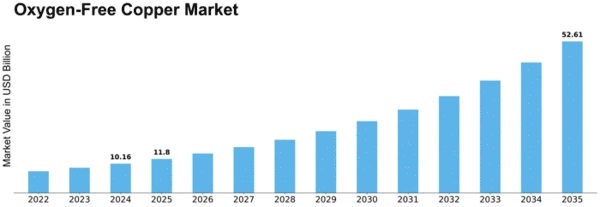

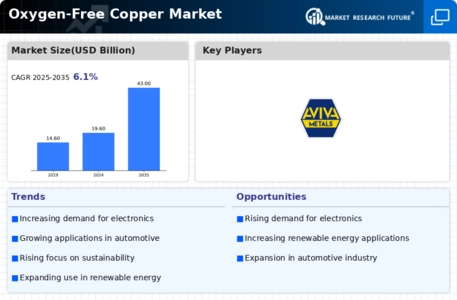
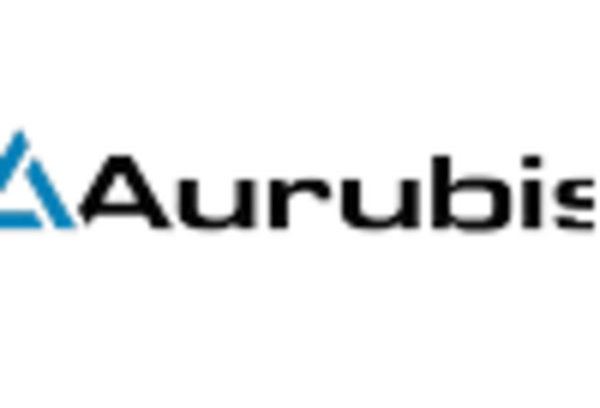
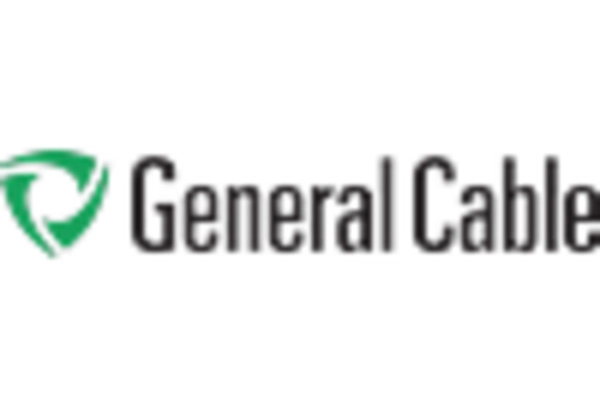
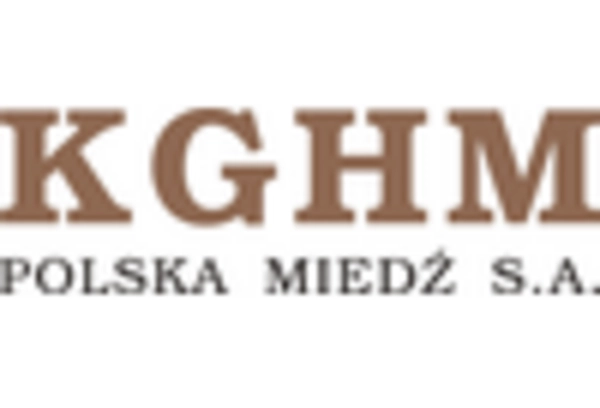
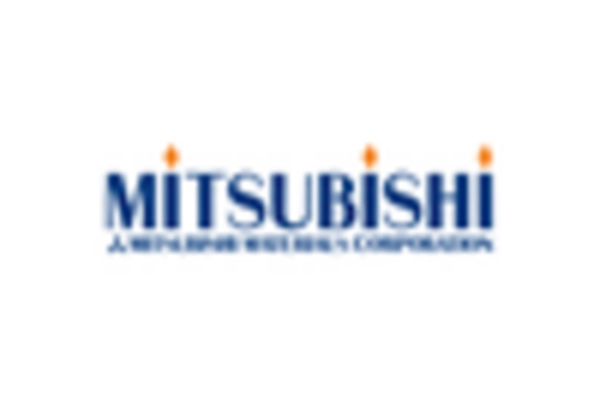
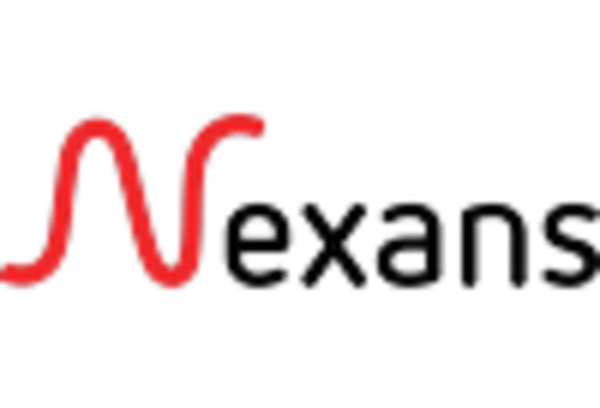










Leave a Comment